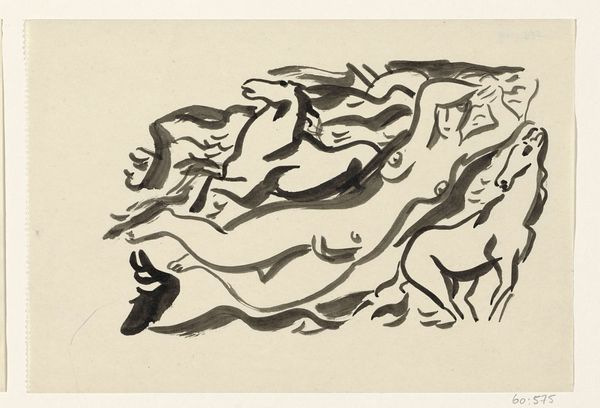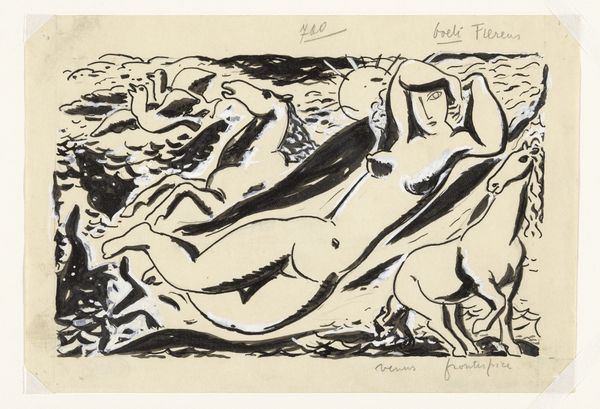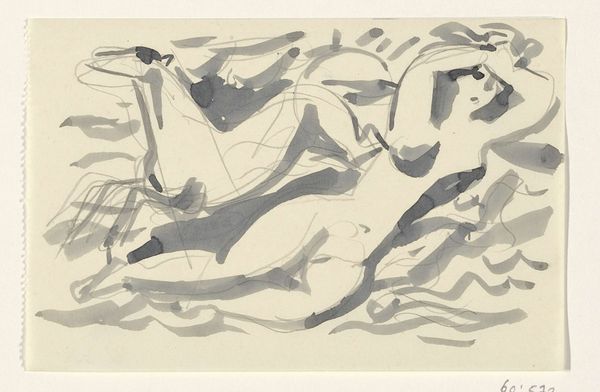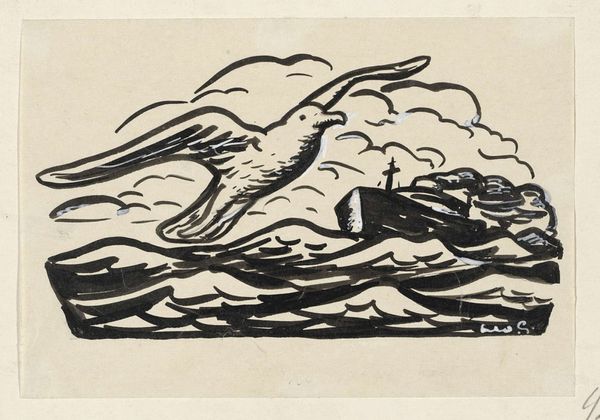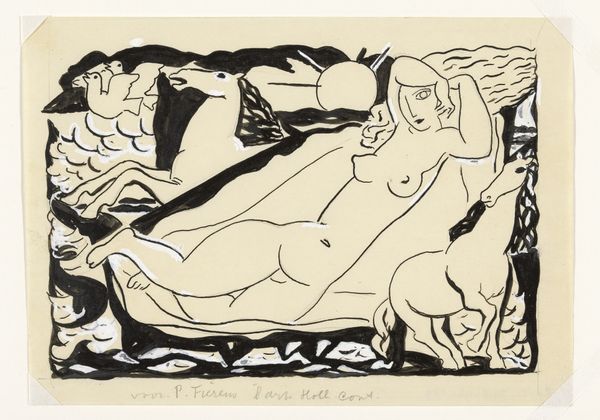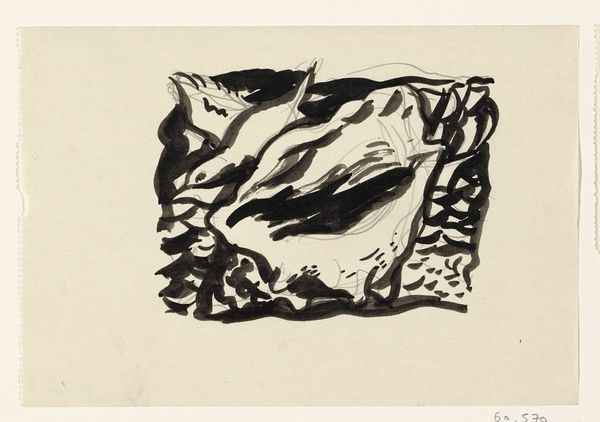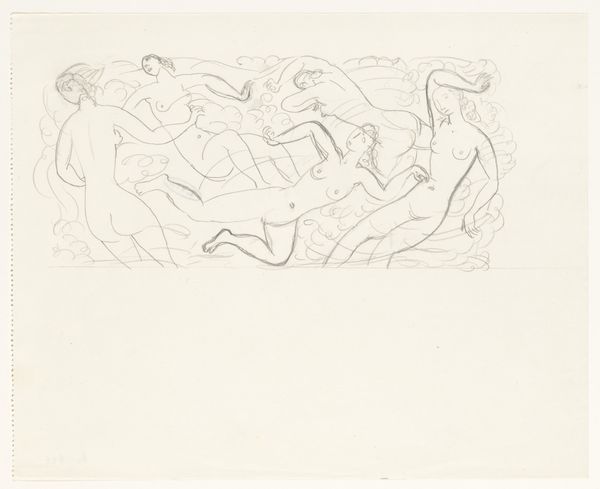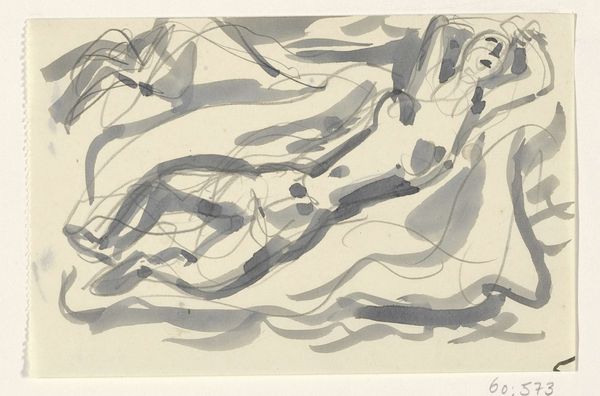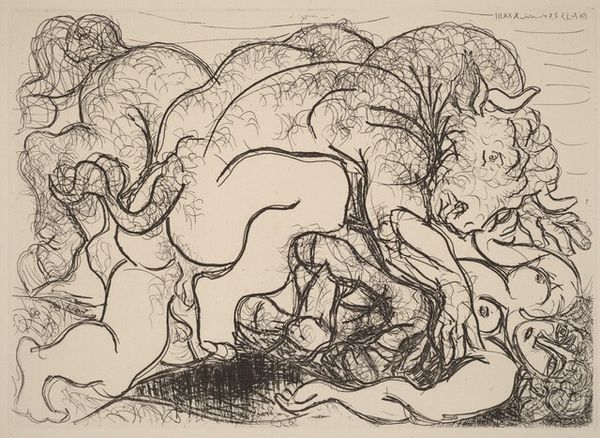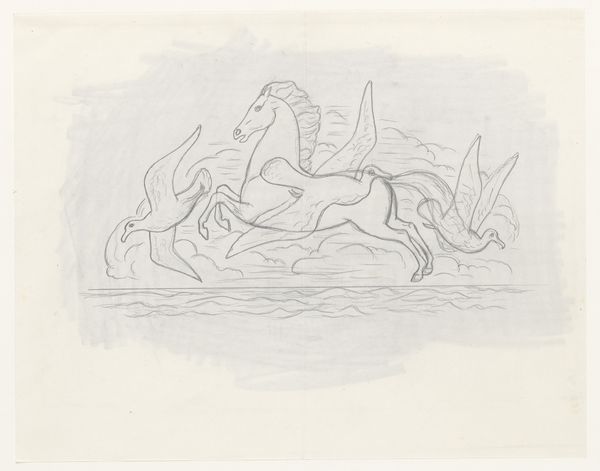
drawing, ink
#
drawing
#
figuration
#
ink
#
horse
#
nude
Dimensions: height 133 mm, width 195 mm
Copyright: Rijks Museum: Open Domain
Curator: This drawing, “Naakte vrouw en paard in de zee,” which translates to “Naked Woman and Horse in the Sea,” is attributed to Leo Gestel and was likely created sometime between 1891 and 1941. What are your initial impressions? Editor: Well, the stark contrast of the black ink on the white paper immediately grabs attention. It's incredibly gestural; the marks are almost violent in their application. There’s a sense of urgency, maybe even anxiety in the composition itself. Curator: Indeed. Gestel’s utilization of ink as a medium is fascinating. Note how the thick, broad strokes define the forms, particularly the bodies of the woman and horse, which almost meld together. The simplification is quite deliberate, bordering on abstraction. Editor: Exactly. The visible labor—the raw application of ink—reveals a fascinating materiality. This is no refined academic study, it is a spontaneous, almost visceral reaction to the subject, isn’t it? One really feels the process. What were the tools used, I wonder? Curator: That's precisely what strikes me. It rejects the traditional idealization of the nude. We're not given a sense of smoothness or tactile flesh but rather an impression constructed by contrasts of value and stark contours. It really forces you to consider how Gestel constructs the image. The strategic placement of negative space is critical to how it all reads as figuration. Editor: Absolutely, it seems deliberately unconcerned with conventional beauty standards. We also must note how the image defies the conventional divide of high art versus craft. This, a drawing, is just as challenging, and provocative as the paintings in other rooms. Its existence and importance resides within the materiality and social dimensions as those larger more refined painting counterparts. Curator: Well said. Ultimately, “Naked Woman and Horse in the Sea” offers a profound glimpse into the complexities of form and representation, demanding us to examine the relationship between mark-making, figuration, and the emotional tenor of an image. Editor: Right, considering Gestel’s era, it reflects a period of upheaval, where new methods and media challenged norms to create new modes for conveying reality beyond the visual, offering instead visceral expression through medium and message.
Comments
No comments
Be the first to comment and join the conversation on the ultimate creative platform.


